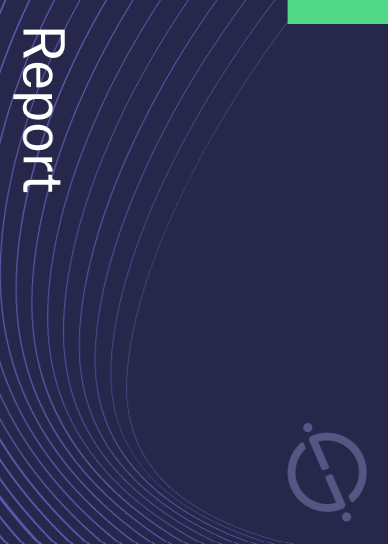Kymera Therapeutics has been granted a patent for a method of treating autoimmune/autoinflammatory diseases and hematological malignancies. The method involves administering a therapeutically effective amount of Compound A, achieving a Cmax of up to about 561 ng/mL in plasma. Compound A is a specific chemical compound with a complex structure. GlobalData’s report on Kymera Therapeutics gives a 360-degree view of the company including its patenting strategy. Buy the report here.
According to GlobalData’s company profile on Kymera Therapeutics, Nanoparticle drug conjugates was a key innovation area identified from patents. Kymera Therapeutics's grant share as of September 2023 was 8%. Grant share is based on the ratio of number of grants to total number of patents.
A recently granted patent (Publication Number: US11773103B2) describes a method for treating autoimmune/autoinflammatory diseases and hematological malignancies. The method involves administering a therapeutically effective amount of Compound A, or a pharmaceutically acceptable salt thereof, and/or composition thereof to a patient in need. The patent claims that a maximum concentration (Cmax) of up to about 561 ng/mL of Compound A in plasma is achieved. Compound A is further defined as 5-((1R,4R)-2-oxa-5-azabicyclo[2.2.1]heptan-5-yl)-N-(3-(difluoromethyl)-1-((1r,4R)-4-((4-((3-(1-(2,6-dioxopiperidin-3-yl)-3-methyl-2-oxo-2,3-dihydro-1H-benzo[d]imidazol-4-yl)prop-2-yn-1-yl)oxy)piperidin-1-yl)methyl)cyclohexyl)-1H-pyrazol-4-yl)pyrazolo[1,5-a]pyrimidine-3-carboxamide.
The patent also includes additional claims related to the Cmax of Compound A, as well as the administration of Compound B and Compound C. Compound B is defined as 5-((1R,4R)-2-oxa-5-azabicyclo[2.2.1]heptan-5-yl)-N-(3-(difluoromethyl)-1-((1r,4R)-4-((4-((3-(1-((S)-2,6-dioxopiperidin-3-yl)-3-methyl-2-oxo-2,3-dihydro-1H-benzo[d]imidazol-4-yl)prop-2-yn-1-yl)oxy)piperidin-1-yl)methyl)cyclohexyl)-1H-pyrazol-4-yl)pyrazolo[1,5-a]pyrimidine-3-carboxamide, while Compound C is defined as 5-((1R,4R)-2-oxa-5-azabicyclo[2.2.1]heptan-5-yl)-N-(3-(difluoromethyl)-1-((1r,4R)-4-((4-((3-(1-((R)-2,6-dioxopiperidin-3-yl)-3-methyl-2-oxo-2,3-dihydro-1H-benzo[d]imidazol-4-yl)prop-2-yn-1-yl)oxy)piperidin-1-yl)methyl)cyclohexyl)-1H-pyrazol-4-yl)pyrazolo[1,5-a]pyrimidine-3-carboxamide. The patent specifies the Cmax ranges for Compound B and Compound C in plasma.
Furthermore, the patent claims that the administration of Compound A at a dose of 10 mg/kg to 200 mg/kg is effective in treating autoimmune/autoinflammatory diseases and hematological malignancies. The patent provides a list of specific doses within this range.
The patent also mentions the achievement of an area under the curve (AUC0-24) of up to 11700 ng*hr/mL of Compound A in plasma, with specific ranges provided. Additionally, the Tmax (time to reach maximum concentration) of Compound A is stated to be achieved within 4 to 12 hours.
The autoimmune/autoinflammatory diseases mentioned in the patent include cutaneous, rheumatic, and gastrointestinal diseases. Specifically, the patent highlights atopic dermatitis (AD) and hidradenitis suppurativa (HS) as examples of cutaneous autoimmune/autoinflammatory diseases.
In summary, the granted patent describes a method for treating autoimmune/autoinflammatory diseases and hematological malignancies by administering Compound A, or a pharmaceutically acceptable salt thereof, and/or composition thereof. The patent provides specific Cmax, AUC0-24, and dose ranges for Compound A, as well as information on Compound B and Compound C. The method aims to address various autoimmune/autoinflammatory diseases, including cutaneous conditions like AD and HS.
To know more about GlobalData’s detailed insights on Kymera Therapeutics, buy the report here.
Data Insights
From

The gold standard of business intelligence.
Blending expert knowledge with cutting-edge technology, GlobalData’s unrivalled proprietary data will enable you to decode what’s happening in your market. You can make better informed decisions and gain a future-proof advantage over your competitors.



